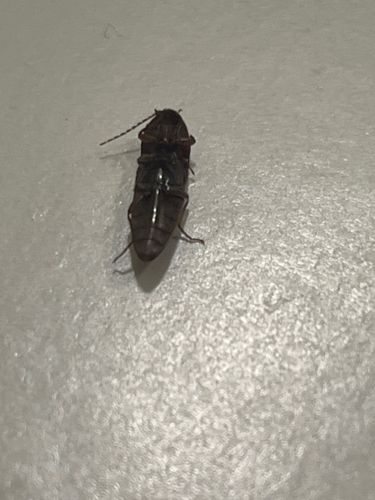Click Beetle
Scientific Name: Elateridae (family)
Order & Family: Order: Coleoptera, Family: Elateridae
Size: Most adult click beetles range from 1 to 3 cm (0.4 to 1.2 inches) in length, though some larger species can reach up to 5 cm (2 inches).

Natural Habitat
Click beetles can be found in a variety of habitats, including forests, grasslands, agricultural fields, and suburban gardens. Adults are often found on vegetation or near lights at night. Wireworms live in the soil, often near the roots of plants.
Diet & Feeding
Adult click beetles typically feed on pollen, nectar, or decaying plant matter, and some may not feed at all, living only to reproduce. The larvae, known as 'wireworms', are primarily herbivorous, feeding on roots, seeds, and tubers of various plants. Some wireworm species can be predatory, feeding on other soil insects.
Behavior Patterns
Click beetles are known for their unique ability to right themselves when on their back. They do this by arching their back and 'clicking' a spine on their prosternum into a groove on their mesosternum, which generates enough force to flip them into the air. This behavior also helps them escape predators. Many species are attracted to lights at night. Larvae (wireworms) can live in the soil for several years before pupating.
Risks & Benefits
The primary risk associated with click beetles comes from their larval stage, wireworms. Wireworms can be significant agricultural pests, causing damage to crops like corn, potatoes, and wheat by feeding on their roots and seeds, leading to reduced yields. They generally pose no direct risk to humans. As for benefits, while some species are pests, others may contribute to the ecosystem by breaking down organic matter, and predatory wireworm species can help control populations of other soil-dwelling pests.
Identified on: 8/28/2025